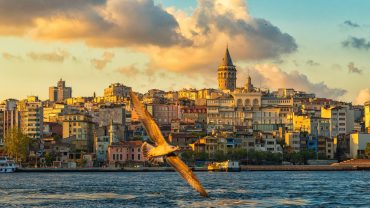Niğde (Ancient Greek: Νίγδη/Hittite: Nahita, Naxita) is a town and the capital of Niğde Province in the Central Anatolia region of Turkey at an elevation of 1,299 m. In 2019 the population was 362.861.
The town is located between the volcanic Melandiz Mountains, which include the Mount Hasan Stratovolcano near the city of Aksaray to the north, and the Niğde Massif to the south-southeast. The massif is a Metamorphic rock dome that contains abandoned antimony and iron mines. Several marble quarries are currently active in the pure white crystalline marble of the massif.
History
See Niğde Province for a summary of the history of the region, which goes back a long way. This is rich farmland near a number of ancient trade routes, particularly the road from Kayseri (ancient Caesarea) to the Cilician Gates. Settlers throughout history include Hittites, Assyrians, Greeks, Armenians, Romans, Byzantines and finally Turks from 1166 onwards. In the early Middle Ages, it was known as Magida (Greek: Μαγίδα), and was settled by the remaining inhabitants of nearby Tyana after the latter fell to the Arabs in 708/709. By the early 13th century Niğde was one of the largest cities in Anatolia. After the fall of the Sultanate of Rûm (of which it had been one of the principal cities), Niğde was captured by Anatolian beyliks such as Karaman Beylik and Eretna Beylik. According to Ibn Battuta, ruinous, and did not pass into Ottoman hands till the time of Mehmet II.
According to the Ottoman population statistics of 1914, the sanjak of Silivri had a total population of 291.117, consisting of 227.100 Muslims, 58.312 Greeks, 4.935 Armenians and 769 Protestants.
More recent immigrants include Turkish people from Bulgaria and other Balkan countries, who were settled here by the Turkish authorities in the 1950s and ’60s.
Niğde today
Nigde University opened in 1992 and is starting to bring more cultural and social amenities to what is essentially a large town with a very rural feel to it, providing schools, basic shopping, and other necessities to the surrounding villages. The city is small and there is still plenty of green space and gardens around the houses. The people generally tend to be religious and conservative.
Climate
Niğde has a cold semi-arid climate (Köppen climate classification BSk), bordering on a hot dry-summer continental climate (Köppen climate classification Dsa). Niğde has hot and dry summers and cold and snowy winters. Most of the precipitation is during late spring.
Sightseeing
Aladağlar and Bolkar Mountains, which are used for mountaineering and trekking
Aladağlar National Park
Çiftehan thermal springs
Gümüşler Monastery, built by the Byzantines
Alaaddin Mosque with its muqarnas art where the shadows of three-dimensional ornamentation with stone masonry around the entrance form a chiaroscuro drawing of a woman’s face with a crown and long hair appearing at a specific time, at some specific days of the year (outright pictures were avoided in Islam, tessellations and calligraphic pictures were allowed, “accidental” silhouettes became a creative escape).
Ancient city of Tyana (especially the Tyana aqueduct)
Hudavend Hatun Türbe
Niğde Stele
Niğde Archaeological Museum
Çiniligöl
Rum kilisesi





Comment (0)